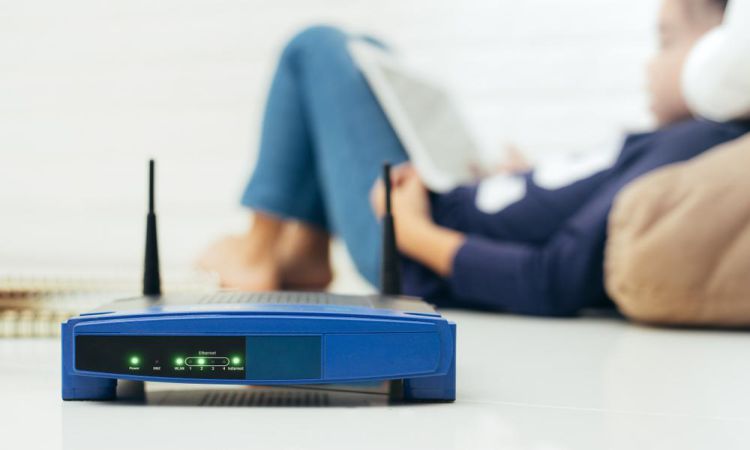 In these cyber-vulnerable times, it is essential to secure your home network by boosting the security of your Wi-Fi password and other measures. Numerous web-connected devices, including smartphones, laptops, tablets, gaming consoles, smart televisions, smart watches, smart thermostats, smart refrigerators, smart lights, smart locks, baby monitors, and more, make up the typical home network. These devices are always in contact with clients or servers online, making them susceptible to threats via the internet.
In these cyber-vulnerable times, it is essential to secure your home network by boosting the security of your Wi-Fi password and other measures. Numerous web-connected devices, including smartphones, laptops, tablets, gaming consoles, smart televisions, smart watches, smart thermostats, smart refrigerators, smart lights, smart locks, baby monitors, and more, make up the typical home network. These devices are always in contact with clients or servers online, making them susceptible to threats via the internet.
Cybercriminal entities and codes that can cause monetary or personal ruin are known as online threats. A hacker who gains access to your home network may corrupt all of the connected gadgets. This is why protecting your house is so important, especially if your home is installed with a smart automation system where all your devices are constantly interacting with each other. Despite the fact that some smart home automation and security services may come with a security suite, you might still need to seal any gaps in your network for extra security.
Likewise, when opting for an internet provider, always go for a well-reputed ISP like Grande Communications Austin that is both safe and secure to use so that your network is not compromised easily.
Let’s examine the following strategies to protect your home network without further ado.
Rename the network
Visibility on the network might quickly work against you. Typically, a provider would name your Wi-Fi network “ABCD Wi-Fi” or something similar when they first put it up. If a hacker discovers this network name, they can access the network equipment without your knowledge by using their intelligent tools to discover the default username and password. Therefore, go into your router’s configuration settings and change the SSID to a more unique and secure title to prevent becoming a victim of hacking attempts.
Disable the Network SSID
Do you know what an SSID is? Your Wi-Fi network’s name or “Service Set Identifier” is known as the SSID. When wireless devices in the area click the “scan Wi-Fi networks” button, this is what shows up on the search list. Cybercriminals may potentially become interested in an SSID that broadcasts. Enter the network settings and turn off the broadcast SSID button to make sure it doesn’t happen. Although your home networks will still be connected if your SSID is disabled and the network ID is saved, there will be less chance of an assault.
Choose a strong password
A home network is locked using a key, which is a password. To ensure permitted access, your Wi-Fi network’s default password of “admin” must be changed to a more robust combination. Your home network should ideally only be accessible to members of your family. Hackers and users who piggyback should be avoided. How would you go about doing that? Setting up a strong password in place on your home network is the answer. A strong password is a special concoction of letters, numbers, and symbols. It must be between 8 and 11 characters long and not contain any information that is easily guessed by hackers, such as the name of your dog, which they can learn from your social media sites. Along with creating a strong password, you should update it frequently to keep it hard for anyone to guess it.
Update the Router
Your home network is powered by a router. It is the central component of the network, controlling the movement of internet traffic and disseminating Wi-Fi signals. A router needs to be updated frequently because it serves such a crucial purpose. Periodically, router manufacturers release firmware upgrades that include the newest security patches and bug fixes. If you don’t regularly upgrade your router, hackers can have a chance to take advantage of device weaknesses and infect the devices in your WLAN. The router’s settings allow you to manually update it or set it to update automatically.
MAC Address Filtering
A MAC, or “Media Access Control address,” is present on every device. Your wireless router’s MAC filtering feature can be turned on to limit access to your home network and safeguard it as a result. To enable MAC filtering, simply go to the router’s settings, select “Firewall,” click “Advanced Settings,” and check the “Enable” box. Click “Add” after entering the MAC addresses of the devices you want to add to your home network in the table. Your Wi-Fi will only be accessible to these gadgets.
Conclusion
Your access to the World Wide Web is through your home network. Your online experience may be hampered if your network is insecure, and data breaches may result. Use the network security recommendations above to avoid that and benefit from safer surfing, streaming, and other online activities.




